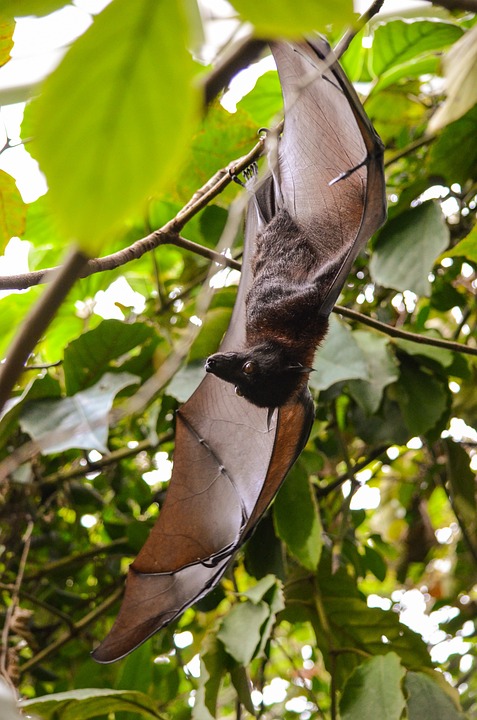Title: Uncovering the Secret World of Bat Echolocation: How They ‘See’ in the Dark
Image: A high-resolution image of a bat in flight, with a faint grid of echolocation sound waves emitted by the bat visible in the darkness. The prey, a small insect, is highlighted in yellow.
Imagine flying through the darkness, relying on no visual cues to navigate and hunt for prey. Sounds daunting, doesn’t it? For bats, however, this is their natural habitat. With their incredible ability to use echolocation, they have developed a sophisticated method to "see" their surroundings, even in complete darkness. In this article, we’ll delve into the fascinating world of bat echolocation and explore how these flying creatures thrive in the dark.
How Does Echolocation Work?
Bats emit high-frequency sounds, usually beyond human hearing range, through their vocal cords. These sounds, often described as clicks or chirps, are directed into the environment around them. As the sound waves bounce back off objects, they create a mental map of the space, allowing the bat to pinpoint the location, size, shape, and even movement of its prey. This complex process is called echolocation.
How Do Bats Process the Information?
Bats process the echoes received through their large ears, which are highly sensitive to sound frequencies. Their brain rapidly interprets the delay, intensity, and frequency of the returned sounds to construct a mental picture of the environment. This remarkable ability to extract information from the echoes allows bats to accurately navigate and hunt in complete darkness.
Examples of Echolocation in Action
- When hunting for insects, a bat may emit a high-pitched call, similar to a rapid "tsee-tsee-tsee" sound. As the echoes return, the bat can locate the exact position and movement of the insect.
- During migration, bats use echolocation to detect landmarks, terrain features, and even other bats. This allows them to fly long distances with incredible accuracy.
The Science Behind Bat Echolocation
Research suggests that bats use a unique frequency-modulated sound emission system to achieve high-resolution echolocation. By altering the frequency and timing of their calls, bats can adjust the echoes to suit different prey, environments, and situations.
Why is Echolocation Important for Bats?
Echolocation is crucial for the survival of bats. In the absence of visual cues, this remarkable ability allows them to:
- Find food in the dark
- Avoid predators and obstacles
- Navigate complex environments
- Socialize and communicate with other bats
FAQs
Q: Do all bats use echolocation?
A: Yes, with a few exceptions, most bats use echolocation as their primary method of navigation and hunting.
Q: Can humans develop echolocation?
A: While humans can develop some echolocation abilities, our brain’s processing capacity and hearing range make it challenging to achieve the same level of accuracy as bats.
Q: Are echolocation calls always loud and audible?
A: No, bats adjust the frequency and amplitude of their calls depending on the situation and environment. In many cases, their calls are inaudible to humans.
Q: How do bats learn to echolocate?
A: Bat pups learn echolocation through mother-bat interactions, including observing and practicing with their mothers. The skill is refined through experience and feedback.
As we marvel at the extraordinary abilities of bats, we are reminded of the intricate and complex relationships within ecosystems. By exploring the fascinating world of bat echolocation, we can better appreciate the importance of preserving these unique creatures and their habitats.


